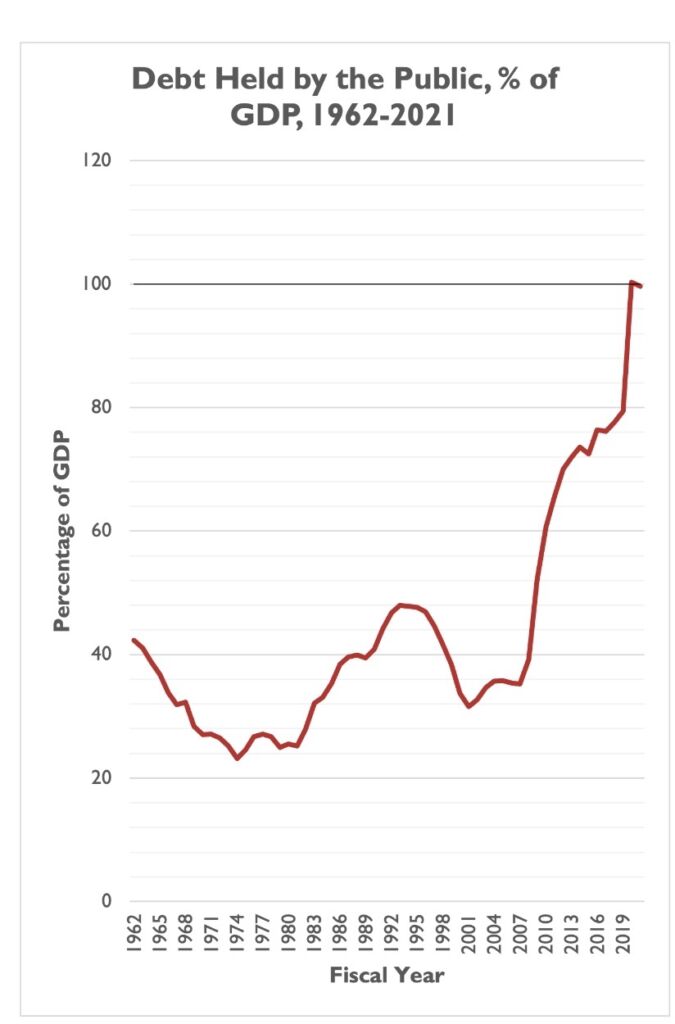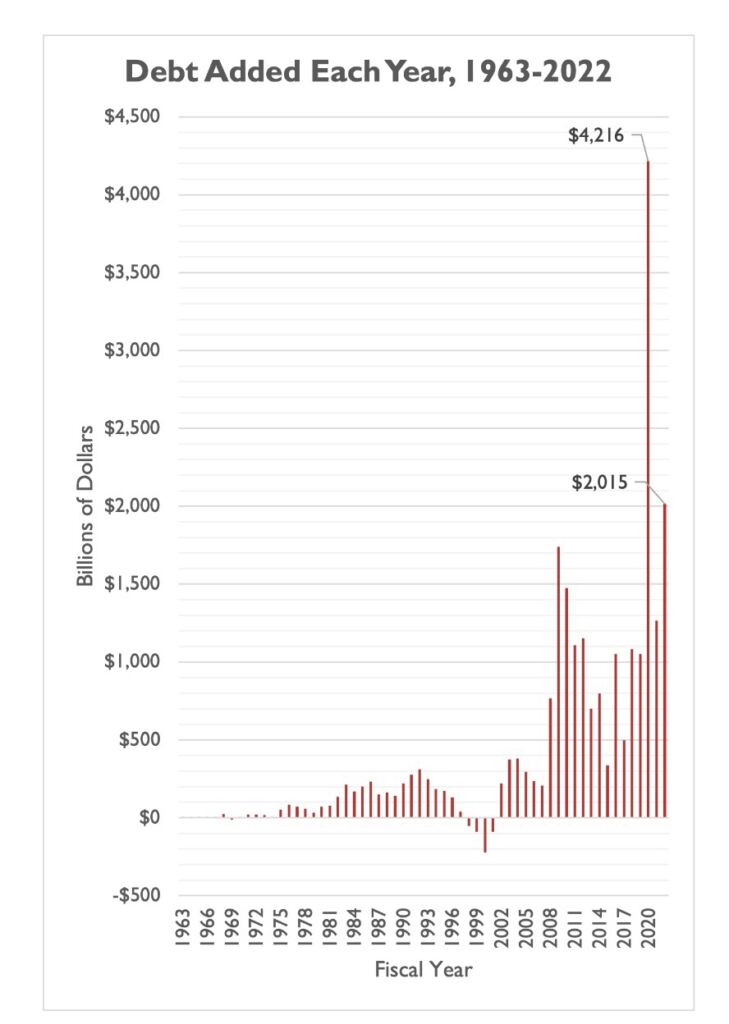The growing US national debt should indeed keep you awake at night
Something scary to think about this Halloween: according to data provided by the U.S. Department of the Treasury, the national debt has surpassed $31 trillion this month. Divided by the U.S. population, the debt comes down to $94,000 per person.

Even more concerning,
An incredible 70 percent of that $31 trillion debt load was accumulated from the start of fiscal year (FY) 2008 (October 1, 2007) through FY 2022 (September 30, 2022), a period of just 15 years.
Of the two components that make up national debt, debt held by the public, which makes up over three-quarters of total debt has seen the greatest rate of growth, rising from under $5 trillion in 1997 to $24 trillion in 2022. Debt held by local and state governments has risen at a slightly lower rate in comparison going from around $2 trillion to $7 trillion in the same period. Although in absolute terms, both types of debt have more than tripled in that period.
How debt compares to GDP
Debt numbers by themselves do not convey economically meaningful information. So, researchers commonly use the debt-to-GDP ratio to convey how indebted one country is.
For the United States, as of 2019, debt held by the public was nearly 100 percent of the country’s total Gross Domestic Product. Historically, that ratio has, on average, hovered under 50 percent. But in recent years, excessive borrowing has added trillions to the debt. In 2020, alone for example, the U.S. federal government added over $4 trillion to the total national debt.

On debt held by the public, $22 trillion has been added between 2008 and 2022. This equates to $1.46 trillion a year. Compared to the past, debt held by the public has grown by $4.8 trillion in the whole period between 1963 and 2007.

The rising national debt has far-reaching consequences
Thanks to the excessive money printing that has enabled all this borrowing, Americans are paying over 8 percent more for basic goods and services than they did a year ago. The horror does not end there, however. There are other specific consequences that are associated with the act of borrowing itself.
In the past, advocates of deficit financing have justified their love for borrowing by pointing to low-interest rates. But with the Fed tightening the money supply to get inflation under control, interest rates have gone up considerably. A high and rising national debt will require higher interest payments by the U.S. government. This means that going forward, a much bigger chunk of our taxes will go to servicing existing debt.
Consider the following from the National Taxpayers Union Foundation,
Net interest spending is projected to be $8.5 trillion in the next 10 years according to CBO, an average of $847 billion per year. Net interest spending sits at around $400 billion per year currently, and accelerates to $1 trillion-plus by the early 2030s. A one-point increase in interest rates next year, under the alternative scenario outlined above, would raise net interest spending an additional $1.1 trillion over 10 years or $110 billion per year on average.
With more money going to interest payments, it means less money for other essential government services like infrastructure. Even worse to think about: in the event that investors suddenly lose confidence in the ability of the U.S. government to pay back its debt, they will abandon government debt, which would further raise the cost of borrowing.
Unfortunately, there the heavy costs of government borrowing do not end with costly interest payments.
For every $1 that the U.S. government borrows, there is $1 less capital available for businesses and other private sector entities. Furthermore, the high demand for debt also raises the cost of borrowing for the private sector.
So, in addition to high-interest payments, increasing government debt will crowd out the private sector, resulting in lower private-sector investment, thereby slowing economic growth in years to come. Not to mention that increasing debt will mean the US government has less flexibility to respond to future crises.
Americans should be concerned
Before she became the U.S. Secretary of the Treasury, Janet Yellen said the following regarding the U.S. national debt in 2017:
It’s the type of thing that should keep people awake at night.
At the time, the national debt was about $20 trillion. Since then, the U.S. government has added $11 trillion more to the tab. With the federal government undertaking spending schemes like student debt cancellation — which is expected to cost over $400 billion that will likely have to be borrowed —, there is no telling where we will end up in ten years.
Suffice it to say, if you weren’t scared in 2017, you certainly should be scared now.